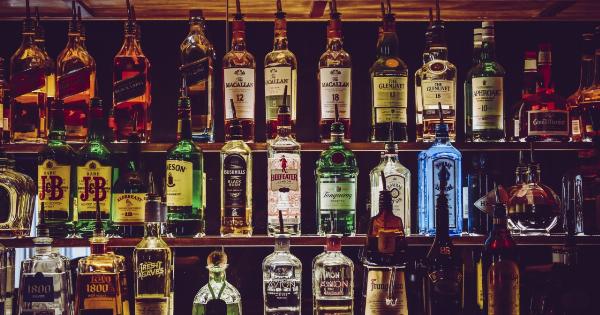Beer is one of the most popular alcoholic beverages worldwide, enjoyed by people from all walks of life. However, the factors influencing beer drinking habits are diverse and can vary greatly among individuals.
From cultural and social influences to personal preferences and marketing strategies, this article will explore the various factors that shape our beer drinking habits.
Cultural Influences
Culture plays a significant role in influencing beer drinking habits. Different countries have unique beer traditions deeply rooted in their cultural heritage.
For instance, Germany is famous for its Oktoberfest, a traditional beer festival that attracts beer enthusiasts from around the globe. The Czech Republic is renowned for its pilsners, while Belgium is well-known for its diverse range of beer styles, including Trappist ales and lambics.
Cultural norms and social customs surrounding alcohol consumption also influence beer drinking habits. In some cultures, beer is consumed during festive occasions and social gatherings, while in others, it is integrated into everyday life.
For example, in countries like Germany and Ireland, beer is often consumed as a part of socializing or during family meals.
Social Influences
Peer pressure and social norms within social circles can greatly impact beer drinking habits. Friends and acquaintances can influence individuals to adopt certain drinking behaviors and preferences.
If a person’s social group frequently drinks beer, they are more likely to incorporate beer into their own habits.
Additionally, media and advertising play a significant role in shaping societal attitudes towards beer.
Beer commercials often depict fun and social gatherings, creating a sense of belonging and encouraging people to consume beer in order to fit in or have a good time. The association between beer and socializing is strengthened through these types of influences.
Taste Preferences
Personal taste preferences are a major factor that influences beer drinking habits. Some individuals prefer lighter and milder beers, while others enjoy bolder and stronger flavors.
Taste preferences can be influenced by an individual’s exposure to different types of beer, as well as their sensitivity to certain flavors.
Moreover, cultural and regional tastes can also shape beer drinking habits.
For example, people from hop-growing regions may develop a preference for hop-forward beers, while those from regions with a tradition of brewing lagers may lean towards milder and lighter styles.
Price and Availability
The price and availability of beer have a significant impact on consumption patterns. In many countries, the affordability and accessibility of beer influence the frequency and quantity of consumption.
Higher prices can deter people from drinking beer regularly, while lower prices can encourage increased consumption.
Geographical location and distribution networks also affect availability. For example, areas with limited access to a variety of beer options may have a narrower range of preferences influenced by what is readily available.
Socioeconomic Factors
Socioeconomic factors, such as income and education level, can influence beer drinking habits.
Individuals with higher incomes might have more disposable income to spend on craft beers or high-end imports, leading to a greater variety in their drinking habits. On the other hand, individuals with lower incomes may lean towards cheaper, mass-produced beers due to financial constraints.
Education and awareness about beer can also play a role. Those with higher levels of education may have a deeper understanding of different beer styles and may be more likely to explore a wider range of options.
Health Considerations
Personal health concerns and dietary choices can impact beer drinking habits. Some individuals may choose to limit or avoid alcohol consumption altogether due to health reasons, including pregnancy, medical conditions, or personal fitness goals.
Additionally, the growing trend of health-conscious consumers has influenced the beer industry.
Low-calorie, low-alcohol, and non-alcoholic beer options have become more popular, catering to those who are mindful of their health but still want to enjoy a beer.
Peer Influence and Role Models
Role models, such as celebrities or influential individuals in society, can significantly impact beer drinking habits.
If a highly regarded public figure openly endorses or is associated with a particular beer brand, it can influence the buying choices and preferences of their followers or admirers.
Moreover, peer influence within specific subcultures can also shape beer drinking habits.
Subcultures that revolve around craft beer or homebrewing, for example, may inspire individuals to explore and experiment with a wider range of beer styles and flavors.
Marketing and Branding
Marketing and branding strategies employed by beer companies have a profound influence on consumer behavior.
Advertising campaigns often create brand loyalty and cultivate a strong association between certain beer brands and consumer lifestyles or values. Clever marketing techniques can make a particular brand appear more desirable or trendy, leading people to choose it over others.
Furthermore, labels, packaging, and overall brand image can significantly impact beer drinking habits. Creative and eye-catching designs on beer bottles or cans can attract consumers and differentiate one brand from another.
Conclusion
Beer drinking habits are influenced by a multitude of factors, including cultural and social influences, taste preferences, price and availability, socioeconomic factors, health considerations, peer influence, and marketing strategies.
Understanding these influences can help individuals make informed choices and foster a greater appreciation for the rich variety of beer styles and flavors available.































